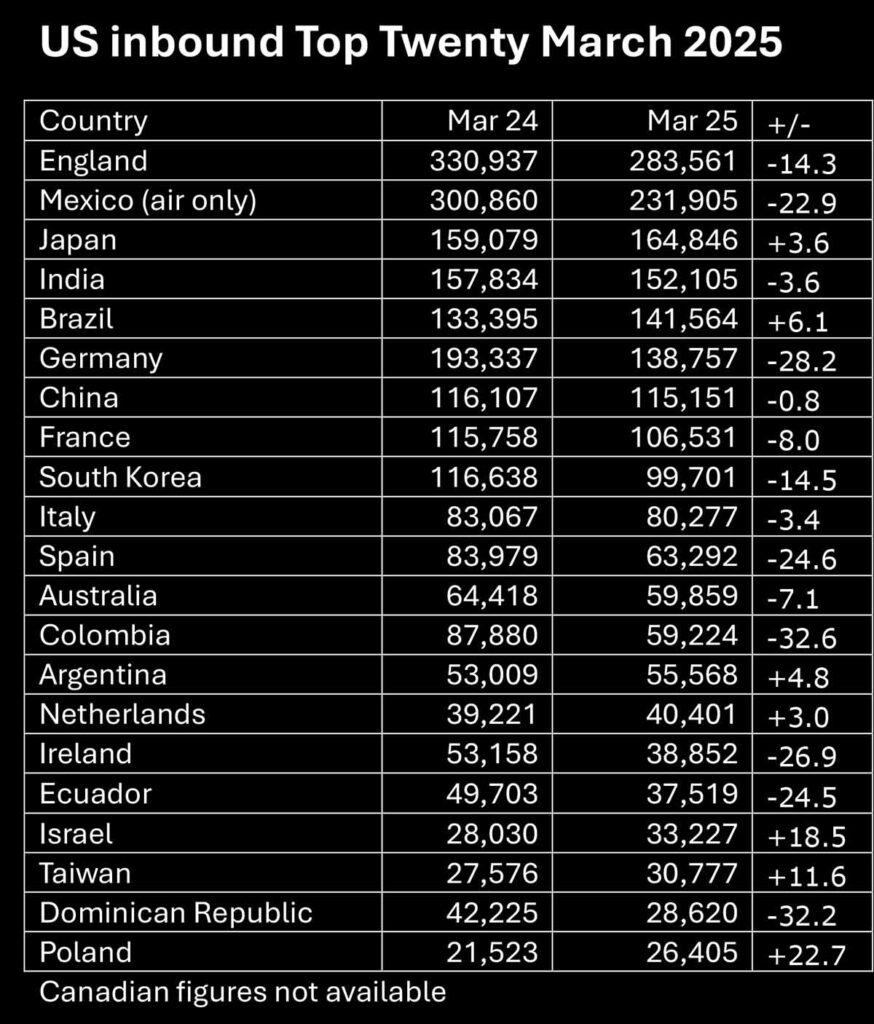
The number of Irish visits to the US was down 26.9pc in March, one of the steepest drops from a European country.
While March figures will be affected day the date of Easter, the figure follows a drop of 3pc in February.
Germany dropped by 30.3pc, England by 14.3pc and France by 8.6pc.
Concerns have been expressed by US Travel about reports of cancelled bookings for the summer ahead from Canada, which is the United States’s second biggest market.
Although figures from important markets such as Canada, the second -largest, are not included in the ITA preliminary stats, According to preliminary data from the National Travel and Tourism Office (NTTO), international tourist arrivals to the U.S. fell by 11.6pc in March 2025 compared to March 2024.
This follows a smaller 2.4pc drop in February 2025. For the first quarter (January–March 2025), visits were down 3.3pc overall.
Tourism Economics, a key industry analyst often cited by the USTA, revised its 2025 projections dramatically. Initially predicting a 9pc growth in international arrivals for 2025, they updated their forecast by late February to a 5pc decline, and by early April to a 9.4pc drop for the year.
This shift was attributed to factors like polarizing U.S. policies, trade tariffs, and stricter border enforcement, which deterred travelers. The March downturn aligns with this trend, contributing to an estimated $9bn loss in international visitor spending for 2025 compared to 2024.
The USTA had warned earlier in 2025 that even a 10pc reduction in Canadian visitors alone could lead to a $2.1bn loss in spending, risking 140,000 hospitality jobs.
High-profile incidents of tourists being detained at U.S. borders (e.g., a British woman held for visa issues, a Canadian detained at the U.S.-Mexico border) fueled global perceptions of an unwelcoming environment.
Canadians reduced cross-border trips significantly, with a reported 23pc drop in car travel in February and a 15pc overall decline expected for 2025, likely worsening by March. Air travel from Mexico fell 6pc year-over-year by February, and European interest waned, with countries like Germany and France issuing travel advisories.
The March drop contributed to a projected $64bn shortfall in total U.S. travel spending (domestic and international) for 2025, with international tourism’s decline playing a major role. Hotel demand was expected to dip by 0.8pc due to fewer foreign visitors.





